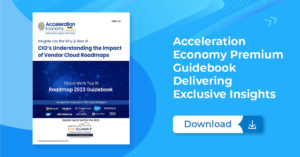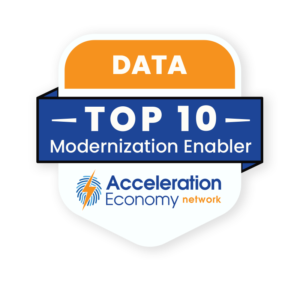With the rise of cloud computing, organizations are faced with the challenge of deciding whether to go with one cloud provider or adopt a multi-cloud strategy. While the former offers the simplicity of one technology stack to manage, it may turn out to be more expensive over time. In this analysis, I’m going to explore how a multi-cloud strategy can reduce costs, along with other benefits.
Multi-Cloud Benefits
Different organizations have unique needs, requirements, and budgets, so a “one size fits all” strategy is not always the best approach when it comes to cloud computing. Here are some areas where a multi-cloud strategy can provide advantages over a single-cloud architecture, along with some particular disadvantages of the single-cloud approach:
- Flexibility to Support Diverse Workloads: Different applications and workloads require different computing resources, storage, and networking capabilities. For example, scientific simulations require high-performance computing, while video content delivery requires low latency and large amounts of storage. A single cloud provider may not be able to offer all of these services at the required levels.
- Broad Geographic Coverage for Performance and Compliance: The location of a cloud provider’s data centers can impact latency, compliance requirements, and regulatory considerations. Organizations with global operations may require multiple cloud providers to meet these complex requirements. For example, if an organization has users in multiple countries, it may benefit from using cloud providers with data centers located in each country or region; this reduces latency and ensures that users have fast and reliable access to applications and services. Furthermore, different countries and regions have different regulations and compliance requirements that may impact an organization’s choice of cloud provider. For example, organizations operating in Europe must comply with the General Data Protection Regulation (GDPR), which imposes strict requirements for the collection, storage, and processing of personal data. To comply with these regulations, organizations may need to choose a cloud provider with data centers located in Europe that meets GDPR requirements.
- Avoids Vendor Lock-In: Relying on a single cloud provider can result in vendor lock-in, which can limit an organization’s flexibility and increase costs. If a cloud provider increases its prices or changes its terms of service, it may force a customer to migrate to another provider, which can be costly and time-consuming.
In addition, here are some potential “worst-case scenarios” that business leaders should consider when taking a single-cloud approach:
- Service outages: If a single cloud provider experiences a service outage, all the organization’s data and applications may be affected.
- Data loss: A single cloud provider’s backup and disaster recovery mechanisms may not be sufficient to protect the organization’s data in the event of a catastrophic failure.
- Performance issues: If a single cloud provider’s resources are oversubscribed, it may cause an organization’s applications and services to suffer from poor performance.
Adopting a multi-cloud strategy can not only help to address these situations but may offer cost savings as you can choose the best cloud provider for each of your specific needs. For example, if you have particularly high data storage requirements, you may find that Amazon Web Services (AWS) offers cost savings over Microsoft Azure and Google Cloud Platform (GCP). On the other hand, if you have high demand for computing power, you may find Azure to be the better choice, as it offers a variety of virtual machines with different configurations.
Don’t Rule Out Small, Specialized Cloud Providers
A multi-cloud strategy does not have to be limited to major cloud providers. Smaller, specialized cloud providers may also be able to save you money.
Smaller cloud providers may offer lower prices due to their lower overhead costs and desire to compete effectively with larger providers. They sometimes offer more customizable packages that better fit your specific needs, allowing you to pay only for what you use. And they may also offer special deals and promotions, such as discounts for long-term contracts or for referring new customers.
One example of a smaller cloud provider that offers customizable packages is DigitalOcean, which specializes in providing developers and small businesses with virtual servers, storage, and networking resources.
DigitalOcean offers a range of customizable plans that allow users to pay only for the resources they need. For example, its virtual server plans range from basic plans that offer 1 vCPU and 1GB of memory to high-performance plans that offer 32 vCPUs and 256GB of memory. Users can choose the exact configuration they need and pay only for those resources, rather than being forced to pay for a pre-configured package that may include more resources than they need. In addition, DigitalOcean’s pricing is transparent and predictable, with no hidden fees or charges. This makes it easy for users to estimate their monthly costs and avoid unexpected expenses.
Other smaller cloud service providers worth checking out include Vultr and OVHcloud.
It’s important to consider the trade-offs of smaller cloud platforms as well. Smaller providers may have limited resources and a smaller pool of customers, which could result in reduced reliability, security, and support compared to larger providers. So, it’s important to weigh the cost savings against the potential risks and limitations before making a decision.
Multi-Cloud Management Requirements
To effectively utilize a multi-cloud strategy for cost and efficiency, it is crucial to choose the right platform that can help optimize the use of those clouds. Multi-cloud management solutions provide a unified view of your entire cloud infrastructure, enabling you to manage and monitor all your resources from a central location. By using these platforms, you can make informed decisions about which cloud provider to use for which services and ensure that you achieve the expected cost savings. There are many such platforms available. A few good examples: Cisco Intersight Cloud Operations Platform, Rackspace Technology, VMWare Aria, and Flexera.
Conclusion
A multi-cloud strategy can deliver significant cost savings over time, but it can also be overwhelming unless you have a platform in place to optimize its use. By using multi-cloud management solutions, you can ensure that you are making the best use of your cloud resources and achieving the maximum cost savings. In today’s fast-paced business environment, it is essential to stay ahead of the curve and embrace new technologies that can help you achieve your business objectives.
Want more tech insights for the top execs? Visit the Leadership channel:










